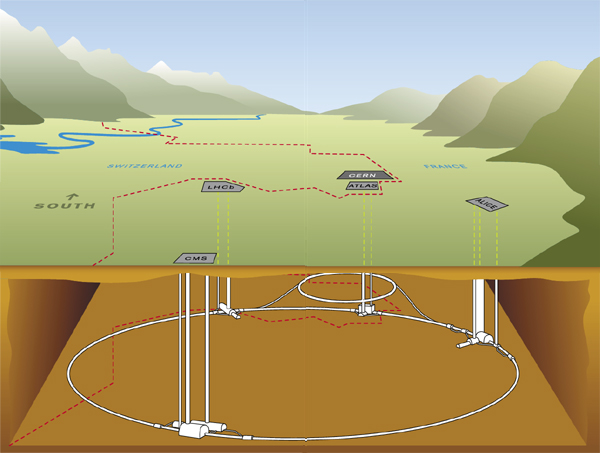Large Hadron Collider (LHC) - Largest particle accelerator
For the Iron Man die hard fans, this large hadron collider has been show in the movie Iron Man 2. This is when Stark need to create a new element by constructing a particle accelerator in his workshop using some metal tubes. When he flips on the switch, two beams of light collide, creating a third beam that Stark steers into a brand new arc reactor. But in the movie are only the concept that they are trying to show to world. In reality, the LHC is much more bigger, powerful and scarier than that.
 |
| Scene in Iron Man 2. Source: www.popularmechanics.com |
Iron Man 2 particle accelerator scene. Source: Youtube
The large hadron collider (HLC) is the world's largest and most powerful particle accelerator. It is first started up on 10 September 2008 by CERN.
| Large Hadron Collider. Source: Google Image |
Thousands of magnets of different varieties and sizes are used to direct the beams around the accelerator. These include 1232 dipole magnets 15 meters in length which bend the beams, and 392 quadrupole magnets, each 5–7 meters long, which focus the beams. Just prior to collision, another type of magnet is used to "squeeze" the particles closer together to increase the chances of collisions. The particles are so tiny that the task of making them collide is akin to firing two needles 10 kilometres apart with such precision that they meet halfway (Source: http://home.web.cern.ch/about/accelerators/large-hadron-collider).
How LHC works. Source: Google Image




0 comments: